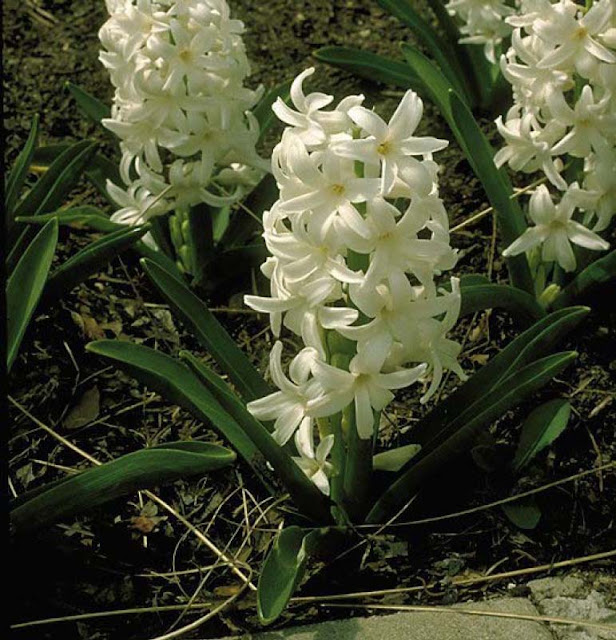Iberis sempervirens 'Purity'
Evergreen Candytuft, Edging Candytuft
Type Perennial
Hardy range 3A to 9A
Height 6" to 8" / 15cm to 20cm
Spread 18" to 24" / 45cm to 60cm
Growth rate Average
Form Rounded
Exposure Partial shade or partial sun to full sun
Persistence Evergreen
Hardy range 3A to 9A
Height 6" to 8" / 15cm to 20cm
Spread 18" to 24" / 45cm to 60cm
Growth rate Average
Form Rounded
Exposure Partial shade or partial sun to full sun
Persistence Evergreen
Bloom Color White
Bloom Time Spring
The flowers are fragrant and showy
Bloom Time Spring
The flowers are fragrant and showy
Environment
This plant tolerates drought.
This plant will grow in moist soil.
Suitable soil is well-drained/loamy.
The pH preference is an acidic to alkaline (less than 6.8 to more than 7.7) soil.
This plant tolerates drought.
This plant will grow in moist soil.
Suitable soil is well-drained/loamy.
The pH preference is an acidic to alkaline (less than 6.8 to more than 7.7) soil.
Leaf Color Green
This plant has attractive foliage.
This plant has attractive foliage.
Culture Notes
Plants prefer a sunny area, with well-drained fertile soil. Stem cuttings can be taken in the late summer. Prune a third of the plant after blooming to maintain the compact habit and vigor of the plant. Plant with: Phlox subulata, Dianthus, Armeria, and Gypsophila repens. 'Purity' is an improvement of the species, sporting a larger flower and blossoming over a longer period of time.
Plants prefer a sunny area, with well-drained fertile soil. Stem cuttings can be taken in the late summer. Prune a third of the plant after blooming to maintain the compact habit and vigor of the plant. Plant with: Phlox subulata, Dianthus, Armeria, and Gypsophila repens. 'Purity' is an improvement of the species, sporting a larger flower and blossoming over a longer period of time.
Iberis sempervirens 'Snowflake'
Evergreen Candytuft, Edging Candytuft
Evergreen Candytuft, Edging Candytuft
Type Perennial
Hardy range 3A to 9A
Height 8" to 10" / 20cm to 25cm
Spread 18" to 24" / 45cm to 60cm
Growth rate Fast
Form Rounded
Exposure Full sun
Persistence Evergreen
Hardy range 3A to 9A
Height 8" to 10" / 20cm to 25cm
Spread 18" to 24" / 45cm to 60cm
Growth rate Fast
Form Rounded
Exposure Full sun
Persistence Evergreen
Bloom Color White
Bloom Time Spring
The flowers are fragrant, showy and suitable for cut flowers.
Bloom Time Spring
The flowers are fragrant, showy and suitable for cut flowers.
Environment
This plant tolerates drought.
This plant will grow in moist soil.
Suitable soil is well-drained/loamy.
The pH preference is an acidic to alkaline (less than 6.8 to more than 7.7) soil.
This plant tolerates drought.
This plant will grow in moist soil.
Suitable soil is well-drained/loamy.
The pH preference is an acidic to alkaline (less than 6.8 to more than 7.7) soil.
Leaf Color Green
This plant has attractive foliage.
This plant has attractive foliage.
Culture Notes
With its flat clusters of white blossoms, Iberis is one of the more popular dwarf garden plants. These plants prefer a sunny area, with well-drained fertile soil. Stem cuttings can be taken in the late summer. Plant with: Phlox subulata, Dianthus, Armeria, and Gypsophila repens. 'Snowflake' is a shorter cultivar, but it has large leaves and large white blossoms.
With its flat clusters of white blossoms, Iberis is one of the more popular dwarf garden plants. These plants prefer a sunny area, with well-drained fertile soil. Stem cuttings can be taken in the late summer. Plant with: Phlox subulata, Dianthus, Armeria, and Gypsophila repens. 'Snowflake' is a shorter cultivar, but it has large leaves and large white blossoms.
Please feel free to comment on any post at any time. All feedback is welcome and we’d love to receive all of your thoughts.
Thank You







